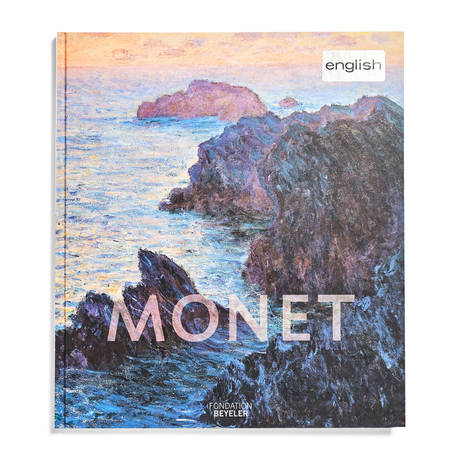
Until May 28, 2017 you can admire the exhibition Monet: Light, Shadow, and Reflection at Fondation Beyeler in Riehen near Basel.
The show with its 64 works by Monet is marking the Swiss museum's twentieth anniversary for a good reason: the late Ernst Beyeler had bought several major paintings by the French artist, including a nine-meter-wide triptych (each panel 200.7 x 301 cm) depicting water lilies and trees in Monet's pond at Giverny, a rendering of the Japanese bridge in the artist's garden, a work from the Rouen Cathedral series as well as two other, outstanding water lily paintings.
Monet: Light, Shadow, and Reflection shows all of Monet, but is in particular dedicated to the period of 1880 to 1905, when his time as a pioneer of Impressionism was over, but the works of his garden at Giverny and his late period influenced by eye problems were still to come.
As Sam Keller and Ulf Küster mention in their catalogue foreword, the death of Monet's first wife, Camille, in 1879, ushered in a phase of reorientation for the artist. Claude Monet had yet to gain to gain universal recognition as a leading artist. However, with the help of his dealers, he was already gaining economic independence, as evidenced by his ever more frequent travels.
His works became less “impressionistic”. Keller and Küster stress that the painted picture itself became more and more the focus of his art. His repetition of motifs both in series and in reflections — reaching its climax and conclusion with the water lily paintings — is interpreted by the exhibition organizers as an ongoing exploration of painting's manifold possibilities. The shadows and areas of shade in his paintings are at once both repeated representation and formal interpretation of the motif. Their abstract form has the effect of lending the paintings a structure that seems to cast doubt on their “pure” representation of the motif. Keller and Küster quote Kandinsky who famously claimed to be unable to identify the actual subject in one of Monet's paintings of a grainstack viewed against the light. The painting itself had attained far more weight than the mere representation of a traditional motif.
The exhibition Monet: Light, Shadow, and Reflection is rather thematic than rigorously chronological. The show follows certain themes that Monet revisited time and again: views of the Seine River, the shape of trees that lend structure to his compositions, coastal landscapes as well as views of the dynamic set in motion by the play of light and shade on a constantly changing sea.
Keller and Küster view the series of morning views of the Seine as a highlight of their exhibition. Interestingly, in January 2017, staying at the Ambassade Hotel Amsterdam, I had a look at the exhibitionDaubigny, Monet, Van Gogh: Impressions of Landscape at Amsterdam's Van Gogh Museum, which explored Daubigny's role as the founding father of Impressionism and as a major source of inspiration for Vincent Van Gogh. They had several important Seine paintings by Monet on show until January 29; the exhibition at Fondation Beyeler opened on January 22. Nevertheless, the Basel show features four major Monet paintings under the title “Morning on the Seine” as well as another nine painting under the title “The Seine”.
However, all sections of the exhibition are outstanding. The number of works of quality is overwhelming, be it the Fondation Beyeler painting La Cathédrale de Rouen in the “Backlight” section, the ten tree paintings in the “Trees” section, including two fabulous “Peupliers” paintings from 1891 as well as two works from 1886 showing willows in hazy sunlight (Les Saules, Giverny from the Gothenburg Museum of Art) respectively in the floods of Giverny (Inondation à Giverny from the Ny Carlsberg Glyptotek in Copenhagen).
In addition, you can admire at Fondation Beyeler ten paintings in the “London” section as well as five Nymphéas in the section of the same name.
No comments:
Post a Comment